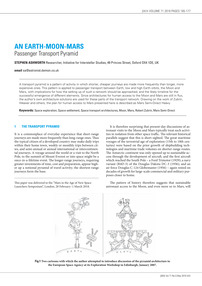= ASTRONAUTICAL EVOLUTION =
Issue 148, 1 August 2019 – 50th Apollo Anniversary Year
| Site home | Chronological index | About AE |
Return to the Moon, 50 Years On
NASA has learned little
NASA’s attempts to return to the Moon 50 years after Apollo 11 in the form of the Artemis Program are painful to watch.
True, NASA has learned a little since Eagle landed. It now expresses an interest in making its spacecraft reusable, and refuelling them in space and on the Moon. It talks of mining lunar water at the South Pole, and building a base with lunar regolith. And it’s inviting contributions from its commercial partners.
All this in support of the goal of Artemis, which is to “send the first woman and the next man to the Moon by 2024 and develop a sustainable human presence on the Moon by 2028.”
Maybe they’ll achieve this? Why not? Isn’t it a noble and worthwhile goal to strive for? Why spoil the party with skeptical comments?
Heroic versus systemic thinking
Ten years ago I discussed the difference between a heroic paradigm of operations and a systemic one. A heroic enterprise is one which requires a particular effort of political will on the part of a monolithic authority. A systemic one is based on the organic growth of a social system comprising a multitude of individual decision-makers. A heroic effort makes a giant leap into the unknown. A systemic one makes small, incremental steps whose cumulative effect is to transform society in a way which is not masterminded by any one actor (not even a government).
Apollo is the quintessential example of a heroic program. Others would include the Manhattan project, the voyages of exploration of 15th-century China, and any war of aggression. Systemic progress, on the other hand, is exemplified by such examples as the agricultural and industrial revolutions, and by the creeping globalisation of the world economy following the industrial revolution, based on key technologies of steam power, the electric telegraph and so on, as well as on mass literacy, mass production, the abolition of slavery and the invention of human rights.
In practice both processes are in play. Columbus’s discovery of the Americas was a heroic mission. But the growing transatlantic traffic that followed in its wake was of a different nature, propelled by the desire on the part of numerous adventurers for gold, land and other resources. Without the systemic growth of that traffic, and without the industrial revolution which greatly accelerated it, America, Europe, Africa, Asia and Australasia would today still be barely in contact.
Apollo needs to be succeeded by the systemic growth of traffic into orbit and to the Moon if NASA’s stated goal of returning to the Moon to stay is ever to be achieved.
Turning space travel from missions into an industry: the transport pyramid
My recent article in JBIS, “An Earth-Moon-Mars Passenger Transport Pyramid”, shows how this might be achieved in practice. The key insight studied in this paper is that, in any normal sphere of human activity, easier, cheaper, shorter-range journeys are undertaken more frequently than more difficult, more expensive, longer-range ones.
Thus a typical person makes daily trips within their home town, weekly or monthly trips between cities, and annual international or intercontinental journeys. A voyage around the world or a visit to the North Pole, to the summit of Mount Everest, to the International Space Station or to the wreck of the R.M.S. Titanic is likely to be a once-in-a-lifetime event. The longer-range journeys, requiring greater investments of time, cost and preparation, appear higher up a notional pyramid of travel activity; the shortest-range journeys form the base.
We therefore need to sketch out a similar pyramid of activity for manned spaceflight. The resulting scenario would look roughly like this:
- 10,000 travellers/year to and from low Earth orbit;
- 1,000 travellers/year to and from highly eccentric Earth orbit with a sightseeing lunar encounter;
- 100 travellers/year to and from a lunar surface settlement;
- 20 travellers per two-year Earth-Mars synodic period to and from Mars.
The Mars travellers would all be professional astronauts; the travellers who go no further than low Earth orbit would be mostly taking a vacation in space.
Compare this scenario with NASA’s plans to see how unrealistic those plans are, and how unlikely it is that NASA will achieve its goal of “a sustainable human presence on the Moon by 2028”.
I believe that Elon Musk, too, will find out in the course of time that he cannot simply send thousands of people to Mars as an activity isolated from other space transport operations. Any such large-scale Mars traffic will need to rest on the technical maturity and economic profitability that can only be provided by a massive base of passenger transport within the Earth-Moon system.
Please send in comments by e-mail.
Interesting and relevant comments may be added to this page.
| Site home | Chronological index | About AE |

